| | Mathison Museum of Natural History |  |
|
+17Birdsage Bonnie Saarlooswolfhound widukind Joliezac spacelab Pardofelis landrover Megaptera lucky luke rogerpgvg Jill George pipsxlch Duck-Anch-Amun Kikimalou Roger 21 posters |
|
| Author | Message |
|---|
bmathison1972
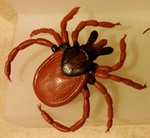
Country/State : Salt Lake City, UT
Age : 52
Joined : 2010-04-12
Posts : 6710
 |  Subject: Re: Mathison Museum of Natural History Subject: Re: Mathison Museum of Natural History  Thu Aug 12, 2021 5:48 am Thu Aug 12, 2021 5:48 am | |
| Species: Ovibos moschatus (Zimmerman, 1780) (muskox) About the Figure: Manufacturer: CollectA Series: Wildlife Year of Production: 2018 Size/Scale: Body length 12.0 cm for a scale of 1:16.7-1:21 Frequency of species in toy/figure form (at time of posting): Uncommon Miscellaneous Notes: In 2018, we were finally given two new muskox figures by major brands, this one and the model by Safari Ltd. I like them both, but I think the paint application on the CollectA figure makes it the overwhelming favorite. The Safari figure, however, is in a slightly more dynamic pose. About the Animal: Geographic distribution: Circumpolar Habitat: Arctic tundra north of the treeline Diet: Grasses, sedges, mosses, shrubs, herbs IUCN Status (at time of posting): Least Concern Miscellaneous Notes: Ovibos moschatus is a social animal, living in smaller groups (usually harems of 5-20) in the summer and larger groups (upwards of 60 members) in the winter. Muskoxen display distinctive group defensive behavior to protect their calves. When predators such as wolves approach a herd, the adults form a ring around the calves facing outwards, with the bulls usually being the first line of defense. [You must be registered and logged in to see this image.] |
|
  | |
spacelab
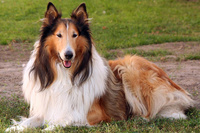
Country/State : Greece
Age : 53
Joined : 2019-02-19
Posts : 977
 |  Subject: Re: Mathison Museum of Natural History Subject: Re: Mathison Museum of Natural History  Thu Aug 12, 2021 6:05 am Thu Aug 12, 2021 6:05 am | |
| Whatever minor mistakes this model has, its sculpt is a piece of art and I love it. Very fitting background too. |
|
  | |
bmathison1972

Country/State : Salt Lake City, UT
Age : 52
Joined : 2010-04-12
Posts : 6710
 |  Subject: Re: Mathison Museum of Natural History Subject: Re: Mathison Museum of Natural History  Fri Aug 13, 2021 5:45 am Fri Aug 13, 2021 5:45 am | |
| Species: Chalcosoma atlas (Linnaeus, 1758) (Atlas beetle) About the Figure: Manufacturer: Wing Mau Series: Flying Beetles Year of Production: unknown (Wing Mau's website states 'until 2006' so released in 2006 or earlier) Size/Scale: Wingspan 10.5 cm. Body length (including horns) 5.3 cm, for a scale of roughly 1:2 for a major male Frequency of species in toy/figure form (at time of posting): Uncommon Miscellaneous Notes: Chalcosoma atlas is not as commonly made as the related C. chiron. Wing Mau did not identify these figures at the species level. This figure is somewhat generic, and the placement of the projection on the cephalic horn could support an ID of either C. atlas or C. chiron. I chose C. atlas because the projection is broad and located closer to the tip of the horn; in C. chiron the projection is an acute spine located about mid-way on the horn. Unlike similar 'flying' figures by Sega, these by Wing Mau do not have bases and do not require assembly. About the Animal: Geographic distribution: Southeast Asia Habitat: Broadleaf forests Diet: Larvae feed in decaying wood and detritus; adults feed on tree sap IUCN Status (at time of posting): Not Evaluated Miscellaneous Notes: Like many large members of the tribe Dynastini, C. atlas exhibits marked sexual dimorphism. Males (shown here) have three pronotal horns (two longer lateral horns and a shorter central horn) and a long cephalic horn. Including horns, males measure approximately 6-12 cm. Females lack horns and measure 2.5-6.0 cm. [You must be registered and logged in to see this image.]
Last edited by bmathison1972 on Sun Aug 15, 2021 1:46 pm; edited 1 time in total |
|
  | |
widukind
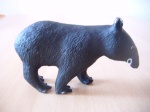
Country/State : Germany
Age : 48
Joined : 2010-12-30
Posts : 45745
 |  Subject: Re: Mathison Museum of Natural History Subject: Re: Mathison Museum of Natural History  Fri Aug 13, 2021 6:46 am Fri Aug 13, 2021 6:46 am | |
| |
|
  | |
Pardofelis

Country/State : Spain
Age : 40
Joined : 2019-01-12
Posts : 2144
 |  Subject: Re: Mathison Museum of Natural History Subject: Re: Mathison Museum of Natural History  Fri Aug 13, 2021 3:00 pm Fri Aug 13, 2021 3:00 pm | |
| What a great casuality, today I made mi species factsheet just for the very same species. _________________ My collection:- (Details):
Homemade: 106
CollectA: 54
Colorata: 31
Safari LTD: 29
Schleich: 20
Papo: 16
Kaiyodo: 13
Mojo Fun: 8
Ikimon/Kitan Club: 6
Southland Replicas: 6
Bullyland: 4
PNSO: 3
CBIOV: 2
Eikoh: 2
Yujin: 2
Takara Tomy:1
Nayab: 1
Happy Kin: 1
Natural History: 1
Science & Nature: 1
Total: 307 |
|
  | |
bmathison1972

Country/State : Salt Lake City, UT
Age : 52
Joined : 2010-04-12
Posts : 6710
 |  Subject: Re: Mathison Museum of Natural History Subject: Re: Mathison Museum of Natural History  Sat Aug 14, 2021 5:50 am Sat Aug 14, 2021 5:50 am | |
| Species: Lucanus maculifemoratus Motschulsky, 1861 (Miyama stag beetle) About the Figure: Manufacturer: F-toys Series: Insect Hunter Beetle and Stag Beetle Year of Production: 2011 Size/Scale: Body length (including mandibles) 6.0 cm, within scale 1:1 Frequency of species in toy/figure form (at time of posting): Common Miscellaneous Notes: This is our third look at L. maculifemoratus in the Museum. Assembly is not required, but the legs are removable. Also, the base of the legs and mandibles are articulated. About the Animal: Geographic distribution: Northeast Asia, including China, Taiwan, Korean Peninsula, eastern Russia, and Japan Habitat: Forests Diet: Larvae feed in rotting wood and detritus; adults feed on tree sap. IUCN Status (at time of posting): Not Evaluated Miscellaneous Notes: Like with many large scarabaeoid beetles, L. maculifemoratus spends most of its life as a larva in the host substrate. The larval development takes almost 2 years, but adults only live for a few months. Adults die after mating and oviposition and do not overwinter as adults. [You must be registered and logged in to see this image.]
Last edited by bmathison1972 on Sat Aug 14, 2021 10:14 am; edited 1 time in total |
|
  | |
widukind

Country/State : Germany
Age : 48
Joined : 2010-12-30
Posts : 45745
 |  Subject: Re: Mathison Museum of Natural History Subject: Re: Mathison Museum of Natural History  Sat Aug 14, 2021 6:38 am Sat Aug 14, 2021 6:38 am | |
| |
|
  | |
bmathison1972

Country/State : Salt Lake City, UT
Age : 52
Joined : 2010-04-12
Posts : 6710
 |  Subject: Re: Mathison Museum of Natural History Subject: Re: Mathison Museum of Natural History  Sun Aug 15, 2021 6:13 am Sun Aug 15, 2021 6:13 am | |
| Species: Bison bonasus (Linnaeus, 1758) (wisent; European bison) About the Figure: Manufacturer: Schleich Series: Wild Life Europe Year of Production: 2003 Size/Scale: Height at shoulder 6.5 cm for a scale of 1:27-1:31 Frequency of species in toy/figure form (at time of posting): Uncommon to rare Miscellaneous Notes: Unlike its North American cousin, this European species has been ignored in recent years by toy manufacturers (even European companies produce the American bison more frequently than the European bison). The two most recent versions are this one, which was retired in 2005, and the one by Bullyland that was available from 2013-2018. About the Animal: Geographic distribution: Eastern Europe, particularly the Białowieża Forest (see below) Habitat: Broadleaf and mixed forests, meadows, young plantations Diet: Primarily grasses, herbs, and sedges, supplemented with trees IUCN Status (at time of posting): Near Threatened Miscellaneous Notes: Historically, B. bonasus was distributed throughout much of Northern and Central Europe, west to the Caucasus. Over time, the population decreased due primarily to habitat destruction, but also hunting. By 1927, the European bison was considered extinct in the wild; only about 50 animals remained, all in zoos. In 1952, the bison was reintroduced to the Białowieża Forest in Poland. Today there are roughly 3,500 wild animals living in forested regions of Germany, Poland, Switzerland, Belarus, and Lithuania. The Białowieża Forest still hold the largest wild population, with about 1000 wild bison. [You must be registered and logged in to see this image.] |
|
  | |
Megaptera
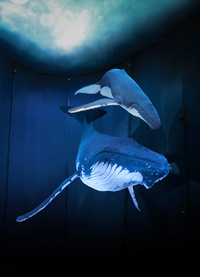
Country/State : Germany
Age : 34
Joined : 2017-11-11
Posts : 1950
 |  Subject: Re: Mathison Museum of Natural History Subject: Re: Mathison Museum of Natural History  Sun Aug 15, 2021 11:50 am Sun Aug 15, 2021 11:50 am | |
| I also have this Wisent. I am still looking for the one from Bullyland. |
|
  | |
rogerpgvg
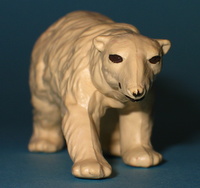
Country/State : UK
Age : 54
Joined : 2016-04-29
Posts : 3894
 |  Subject: Re: Mathison Museum of Natural History Subject: Re: Mathison Museum of Natural History  Sun Aug 15, 2021 11:59 am Sun Aug 15, 2021 11:59 am | |
| Good to read that the numbers of this magnificent animal are increasing. |
|
  | |
bmathison1972

Country/State : Salt Lake City, UT
Age : 52
Joined : 2010-04-12
Posts : 6710
 |  Subject: Re: Mathison Museum of Natural History Subject: Re: Mathison Museum of Natural History  Sun Aug 15, 2021 12:41 pm Sun Aug 15, 2021 12:41 pm | |
| - rogerpgvg wrote:
- Good to read that the numbers of this magnificent animal are increasing.
Glad you saw this; I meant to cross reference it on your 1:32 thread since it's pretty close :) |
|
  | |
bmathison1972

Country/State : Salt Lake City, UT
Age : 52
Joined : 2010-04-12
Posts : 6710
 |  Subject: Re: Mathison Museum of Natural History Subject: Re: Mathison Museum of Natural History  Sun Aug 15, 2021 12:43 pm Sun Aug 15, 2021 12:43 pm | |
| - Megaptera wrote:
- I also have this Wisent. I am still looking for the one from Bullyland.
I actually bought this one in 2004-2006 before I was specializing in arthropods. When I visited my old roommate earlier this year, I went through my old animals and brought it back with me (among several others). I think I like the Bullyland one a little better, but it's not so much better that I need to actively look for it to replace this one. This one is fine for my needs :). |
|
  | |
widukind

Country/State : Germany
Age : 48
Joined : 2010-12-30
Posts : 45745
 |  Subject: Re: Mathison Museum of Natural History Subject: Re: Mathison Museum of Natural History  Sun Aug 15, 2021 2:56 pm Sun Aug 15, 2021 2:56 pm | |
| |
|
  | |
bmathison1972

Country/State : Salt Lake City, UT
Age : 52
Joined : 2010-04-12
Posts : 6710
 |  Subject: Re: Mathison Museum of Natural History Subject: Re: Mathison Museum of Natural History  Mon Aug 16, 2021 6:21 am Mon Aug 16, 2021 6:21 am | |
| Species: Papilio polyxenes Fabricius, 1775 (black swallowtail; eastern black swallowtail; parsley swallowtail) About the Figure: Manufacturer: K&M International; Insect Lore Series: Butterflies Mini Polybag (K&M); Big Bunch-O Butterflies (IL) Year of Production: unknown (K&M); 2013 (IL) Size/Scale: Wingspan 3.5 cm for a scale of 1:2.3-1:3.1 Frequency of species in toy/figure form (at time of posting): Very rare Miscellaneous Notes: Figures from neither set are marketed at the species level and the identifications are my own. The figure on the left is by K&M International; the one on the right is by Insect Lore. The two figures are identical and without unique markings. I only know which is which because I can compare the nuances of the paint application with images in earlier posts on the forum! Whether Insect Lore copied K&M (I do know the K&M model came first) or they both outsourced the same manufacturer, I do not know. About the Animal: Geographic distribution: Southern Canada and much of the United State (absent in the Pacific Northwest), south to South America and the West Indies Habitat: Meadows, fields, parks, gardens, marshes, deserts Diet: Larvae feed primarily on plants in the family Apiaceae (carrot family); adults take nectar from flowers IUCN Status (at time of posting): Least Concern [NatureServe status Secure] Miscellaneous Notes: Papilio polyxenes exhibits sexual dimorphism. Males (as shown in these figures) are black with yellow spots, but the females are larger and have blue on the hindwings as well. It is believed the color of the female represents Batesian mimicry with the pipevine swallowtail ( Battus philenor). [You must be registered and logged in to see this image.] |
|
  | |
rogerpgvg

Country/State : UK
Age : 54
Joined : 2016-04-29
Posts : 3894
 |  Subject: Re: Mathison Museum of Natural History Subject: Re: Mathison Museum of Natural History  Mon Aug 16, 2021 6:44 am Mon Aug 16, 2021 6:44 am | |
| Is there an explanation why the female shows Batesian mimicry but the male doesn't? Would it not be advantageous for both sexes? |
|
  | |
bmathison1972

Country/State : Salt Lake City, UT
Age : 52
Joined : 2010-04-12
Posts : 6710
 |  Subject: Re: Mathison Museum of Natural History Subject: Re: Mathison Museum of Natural History  Mon Aug 16, 2021 6:49 am Mon Aug 16, 2021 6:49 am | |
| - rogerpgvg wrote:
- Is there an explanation why the female shows Batesian mimicry but the male doesn't? Would it not be advantageous for both sexes?
the female needs to live longer to lay eggs. Biologically speaking, the male isn't needed after mating, and mating usually occurs shortly after emergence. True, it probably would help the male last a little longer, but it's more important for the female to do so. |
|
  | |
rogerpgvg

Country/State : UK
Age : 54
Joined : 2016-04-29
Posts : 3894
 |  Subject: Re: Mathison Museum of Natural History Subject: Re: Mathison Museum of Natural History  Mon Aug 16, 2021 8:45 am Mon Aug 16, 2021 8:45 am | |
| |
|
  | |
widukind

Country/State : Germany
Age : 48
Joined : 2010-12-30
Posts : 45745
 |  Subject: Re: Mathison Museum of Natural History Subject: Re: Mathison Museum of Natural History  Mon Aug 16, 2021 9:48 am Mon Aug 16, 2021 9:48 am | |
| |
|
  | |
bmathison1972

Country/State : Salt Lake City, UT
Age : 52
Joined : 2010-04-12
Posts : 6710
 |  Subject: Re: Mathison Museum of Natural History Subject: Re: Mathison Museum of Natural History  Tue Aug 17, 2021 5:49 am Tue Aug 17, 2021 5:49 am | |
| Species: Chalcosoma chiron (Olivier, 1789) (Caucasus beetle) About the Figure: Manufacturer: Takara Tomy A.R.T.S. Series: B.I.G. Beetles Year of Release: 2005 Size/Scale: Body length (including cephalic horn) 10.5 cm, within scale 1:1 Frequency of species in toy/figure form (at time of posting): Common Miscellaneous Notes: Most figures of C. chiron are sold under its synonym, C. caucasus. This is our second look at C. chiron in the Museum. This large figure requires assembly and the final product has minimal articulations. This figure, and slight variations of it, have been recycled several times by Takara and Subarudo. About the Animal: Geographic distribution: Thailand, Vietnam, Malaysia, Indonesia Habitat: Rainforests Diet: Larvae feed in decaying wood and detritus; adults feed on tree sap IUCN Status (at time of posting): Not Evaluated Miscellaneous Notes: Like many large scarabaeid beetles, especially those among the Dynastinae, C. chiron exhibits marked sexual dimorphism. In addition to lacking cephalic and pronotal horns, females have a smaller body and a velvety texture to the elytra due to the presence of dense, small setae (hairs). [You must be registered and logged in to see this image.][/i][/i] |
|
  | |
widukind

Country/State : Germany
Age : 48
Joined : 2010-12-30
Posts : 45745
 |  Subject: Re: Mathison Museum of Natural History Subject: Re: Mathison Museum of Natural History  Tue Aug 17, 2021 11:15 am Tue Aug 17, 2021 11:15 am | |
| |
|
  | |
Caracal
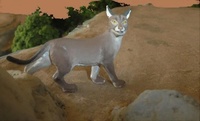
Country/State : France
Age : 65
Joined : 2018-10-24
Posts : 7252
 |  Subject: Re: Mathison Museum of Natural History Subject: Re: Mathison Museum of Natural History  Wed Aug 18, 2021 5:00 am Wed Aug 18, 2021 5:00 am | |
| This Schleich wisent is not as precisely graved as the Bully one but it's the one I prefer! Starlux had produiced one at the biginning of the seventies and there is the wonderful old Elastolin one! :) |
|
  | |
bmathison1972

Country/State : Salt Lake City, UT
Age : 52
Joined : 2010-04-12
Posts : 6710
 |  Subject: Re: Mathison Museum of Natural History Subject: Re: Mathison Museum of Natural History  Wed Aug 18, 2021 5:47 am Wed Aug 18, 2021 5:47 am | |
| Species: Apis mellifera Linnaeus, 1758 (western honey bee) About the Figure: Manufacturer: Discovery Channel Series: Terrors of Nature - Most-feared Beasts Year of Production: 1999 Size/Scale: Body length 4.0 cm for a scale of 3.3:1-2.7:1 Frequency of species in toy/figure form (at time of posting): Common Miscellaneous Notes: This figure was specifically sold as a 'killer bee' even though in reality such a concept doesn't exist (see below). About the Animal: Geographic distribution: Nearly worldwide. Believed native to Africa and/or Central Asia, with natural spread throughout Africa and Europe; introduced to the Western Hemisphere, Australia, New Zealand, and East Asia by humans for honey production Habitat: Highly varied; anywhere with suitable hive-building sites and flowers for food source. Diet: Larvae are fed pollen by the adults; adults eat nectar and pollen IUCN Status (at time of posting): Data Deficient Miscellaneous Notes: In the 1950s, an African subspecies of honey bee ( A. m. scutellata) was crossbred with European subspecies, in an attempt to make a breed that would produce more honey in tropical climates. In 1957, 26 swarms of the Africa subspecies escaped quarantine in Brazil and started crossbreeding with European subspecies in the area. These hybrids were more defensive than other strains and are more likely to respond to disturbances, giving the impression they are naturally more aggressive towards humans and more likely to attack. These Africanized bees moved northward, reaching Mexico in 1985 and the United States in the early 1990s. The term 'killer bee' was used by the media to sell sensationalism and by film producers to sell horror movies. It created widespread fear and people would call local extension offices and pest control companies every time they saw a honey bee, fearing it was a 'killer bee'. In reality, any honey bee will aggressively protect its colony when provoked, not just the African hybrids, and it is impossible to recognize an African strain from gross morphology alone. [You must be registered and logged in to see this image.] |
|
  | |
widukind

Country/State : Germany
Age : 48
Joined : 2010-12-30
Posts : 45745
 |  Subject: Re: Mathison Museum of Natural History Subject: Re: Mathison Museum of Natural History  Wed Aug 18, 2021 10:46 am Wed Aug 18, 2021 10:46 am | |
| |
|
  | |
Caracal

Country/State : France
Age : 65
Joined : 2018-10-24
Posts : 7252
 |  Subject: Re: Mathison Museum of Natural History Subject: Re: Mathison Museum of Natural History  Wed Aug 18, 2021 12:22 pm Wed Aug 18, 2021 12:22 pm | |
| Interesting explanations!  |
|
  | |
bmathison1972

Country/State : Salt Lake City, UT
Age : 52
Joined : 2010-04-12
Posts : 6710
 |  Subject: Re: Mathison Museum of Natural History Subject: Re: Mathison Museum of Natural History  Thu Aug 19, 2021 5:46 am Thu Aug 19, 2021 5:46 am | |
| Species: Zootoca vivipara (Lichtenstein, 1823) (viviparous lizard) About the Figure: Manufacturer: Kaiyodo Series: Choco Q Animatales Series 10 Year of Production: 2005 Size/Scale: Figure length 9.5 cm. Snout-to-vent length 5.0 cm, within scale 1:1 Frequency of species in toy/figure form (at time of posting): Unique Miscellaneous Notes: Being one of the original Choco Q figures, some assembly is required. About the Animal: Geographic distribution: Europe, Northern and Central Asia, Japan Habitat: Damp forests, meadows, swamps, moorland, heathland, fens, dunes, hedgerows, gardens Diet: Invertebrates IUCN Status (at time of posting): Least Concern Miscellaneous Notes: Zootoca vivipara gets its common name from the ability of some northen populations to give birth to live young, an adaptation for cooler climates. However, in the southern part of its range, where the climate is warmer, some populations lay eggs like other lizards. [You must be registered and logged in to see this image.] |
|
  | |
Sponsored content
 |  Subject: Re: Mathison Museum of Natural History Subject: Re: Mathison Museum of Natural History  | |
| |
|
  | |
| | Mathison Museum of Natural History |  |
|
